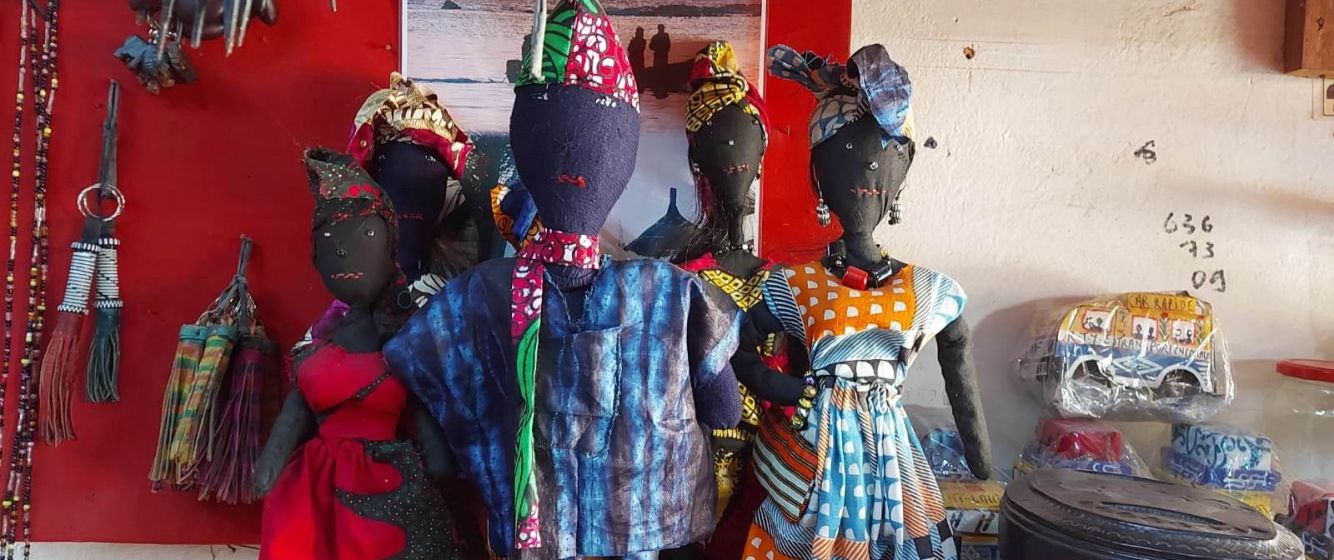From November 3 to 6, 2022, GAEC/UGB, along with HAB/IIAS and support of the CHCI, organized Craft as Method; a joint graduate school in Saint Louis, Senegal that used 'craft' as legitimate knowledge to demonstrate the pedagogical potential of discussions between members of the academe, civic actors, and local participants. In bringing in community-based craft practitioners to learn about the embedded culture of Saint Louis in their work, Mali & University of Basel scholar and HAB partner Mohomodou Hossouba discusses his experiences as part of the workshop. (Part 2)
3. Ambivalent contingencies: ethnicity, language, religion, gender
The extension of national crafts to the exhibition of ethnic products and methods was a pivotal moment on which I do not wish to dwell. All the same, I was amazed to find similar and identical practices, tools and end products in Mali. First of all, it shouldn’t be any surprise that the two countries share a long, common precolonial history and many ethnic groups and their languages. The Pulaar/Fulani are a strong presence from the Atlantic coast in Senegal and Guinea to the Adamawa mountains in Cameroon, even beyond. My own paternal family originated from a long Fulani migration from the Senegalese-Guinean border to central and northern Mali, over several centuries. They have distant relatives as far east as the Nile confluent, south of Khartoum in Sudan. The instruments used to process milk, grain and meat are identical. Many of the tools and implements used by the Joola (Diola) of Casamance are familiar to me too.
Another commonplace scene I became aware of: the dominance of Wolof as language and cultural frame of reference, the way Bambara functions in Mali. And since I speak a smaller language (Songhay), I tend to be sensitive to a sort of innate obliviousness in the way smaller languages are treated. For example, the fact that Har-Pulaar/Fulfulde speakers had to insist to be able to present their tradition in their language, with workshop student volunteering as interpreter. The Serer reverted to Wolof, etc. This indicates a frequent misleading assumption that all Senegalese are Wolof speakers unless they resist being taken as such. I asked this question to colleagues (Fulfulde, Joola speakers) who betrayed some frustration about the state of affairs, as well as almost militant Wolof speakers who insisted that there was no problem, that actually any Senegalese who wants to speak Wolof can and will. To be sure, that seemed to be the case in Saint-Louis. There is nothing that I can say to the contrary beyond the island city, but I am far from being reassured or convinced.
Moving among academic circles in Saint-Louis, in the midst of the apparent social harmony among Senegalese of different ethnic and religious belonging, I was also struck by a phenomenon I had noticed elsewhere in the region, in Burkina Faso, Niger, Mali, Guinea, the increased visibility of Islamic religious signs. In my college years, there were a few female students wearing head scarves, often on and off, but rarely hijab or such, day and night. Actually, the few Catholic sisters attending classes in their religious dresses were the more consistent display of religiosity on campus. Nowadays, it is rather the whole assortment of more less “closed” Islamic dress codes adhered to that impressed me. The trend might be growing in the future too, without any indication of where it would lead or end. Yes, one thing is certainly the contrast with the traditional Senegalese woman’s dress, known for its elegance and variety. There are fashionable elements in religiously oriented dressing too, but uniformity and closure appear to be stronger than ever. It seems to be another imported code imposed (mainly) on local (female) bodies that are used to ampler, looser and more colorful garments and scarves rather than being tightly stuffed into synthetic robes and pre-sewn monochrome veils and hijabs.
4. Not to end on this note
Almost in a song I could have heard, what a lovely town, what a lovely isle. Saint-Louis had been a marvelous venue, almost too perfect for closed-circuit self-staging. Walking across the door and the street to one or two master class artisans, to the bookstore L’Agneau carnivore (what a meat-eating lamb) and run into a celebrated native author or photographer just around the corner. Between the resort hotel of the workshop (Cap Saint-Louis, Keur Dada, Siki and Résidence, I drove cabs or walked with different colleagues and groups, and these informal chats remain my most valuable spoils of the expedition. I got to hear about life and work in Singapore, Bangkok, Taipei, Saint-Louis, Accra, Bodoya, Sherbrooke, Leiden, Chennai, Gao, Bamako, Ziguinchor, Kenyon, Dar es Salaam, Lusaka, New Delhi, Jakarta, Dakar… We shared contacts and cards, one knows from experience, only one or two will hold on the line. We talked about what to do next, and there I am still struck by how much language had figured in our conversations, even though there was no specific linguistic focus to the meeting. And to be sure, GAEC contacted me first in mid-December with a request to write a short text (Songhay and English), translate a longer one on Saint-Louis into Songhay and find someone to translate a different one on the city into Tamashek (Tuareg landscape). I also put a Saint-Louis in contact with the organizers of the Malian literary festival. I am planning to resume the exchange with the Kenyon colleague on producing a rice “fan” book in the format of the Delhi Community Centre publications (neighborhoods, immigrants, local museums and libraries). So, on my end, the continuation of informal collaboration has already borne fruit, before the big projects take shape and spread across borders. Yes, one is the first HAB book on the word that Aarti and I are coediting. Talking face to face with several of the authors was a great treat and at times a unique opportunity break loose from numbing formalities.
In the end, taking place in a dual context of familiarity and defamiliarization, the Saint-Louis meeting has confronted me with volatile and ambivalent sentiments about my place and role in the academy, as well as my capacity to exist and create outside of it, and think and act beyond its perimeter. I don’t know what’s coming up next with a slowdown between the end and beginning of years. But, being HAB, I assume it is a retreat to kick new impetus into the creative and collaborative process already underway.

